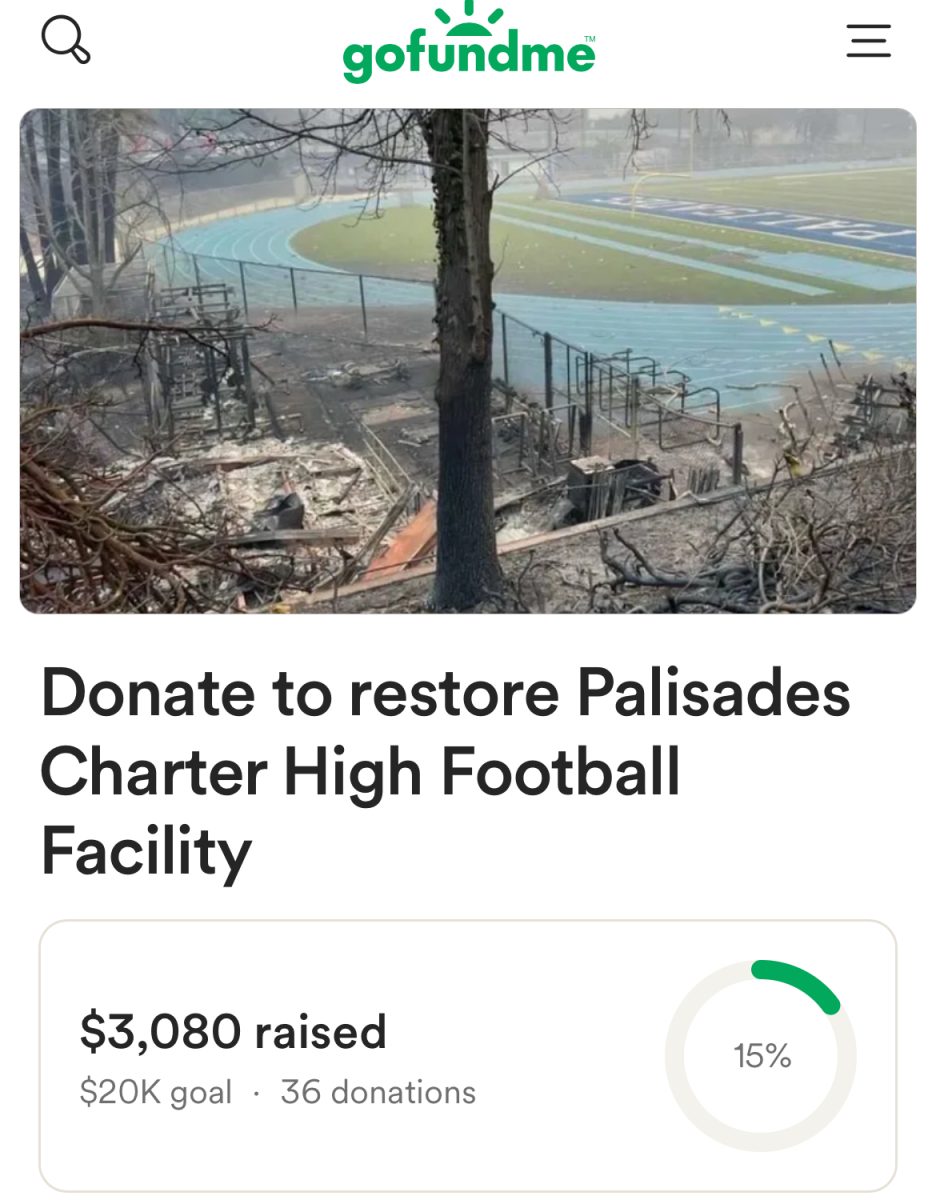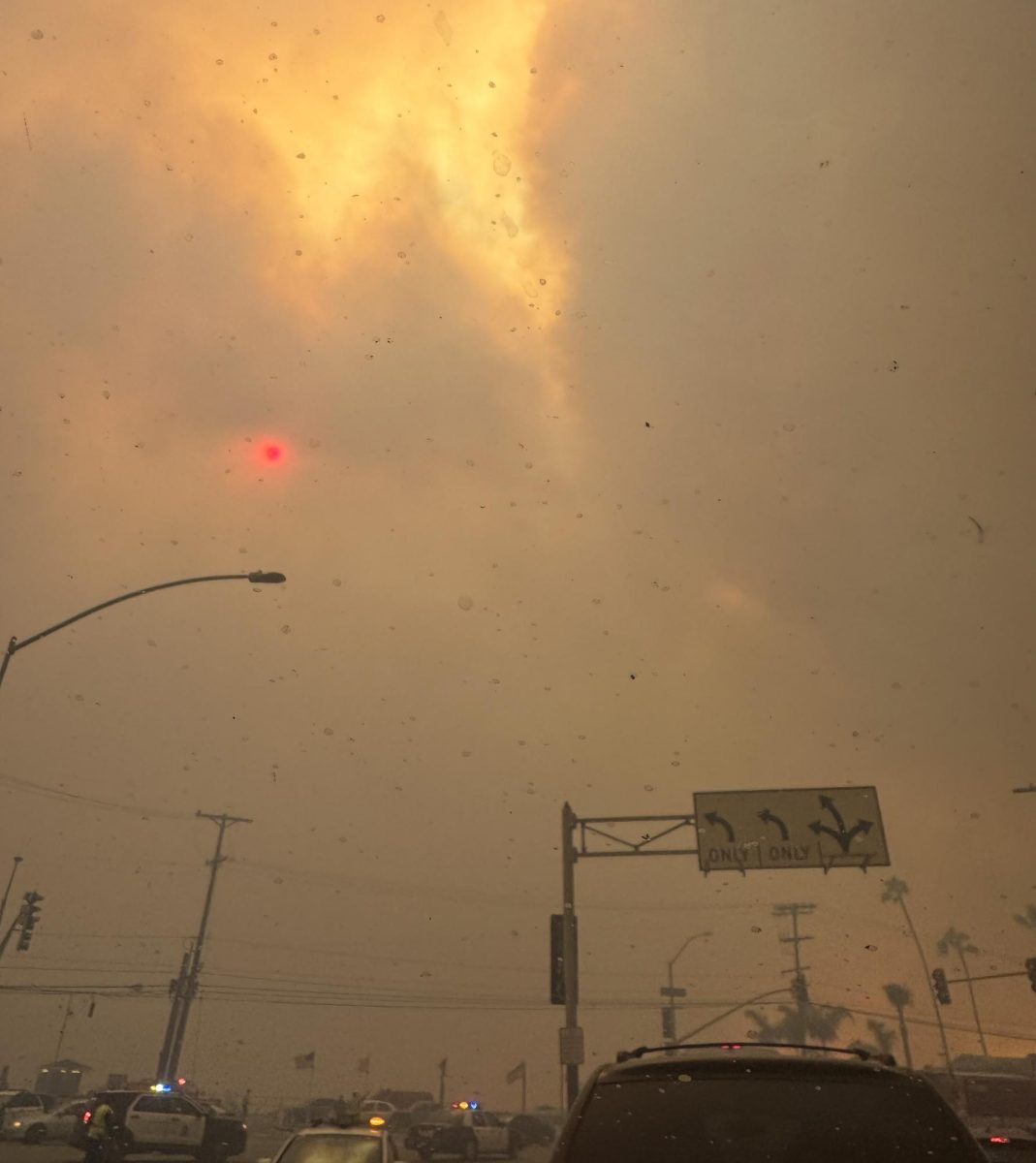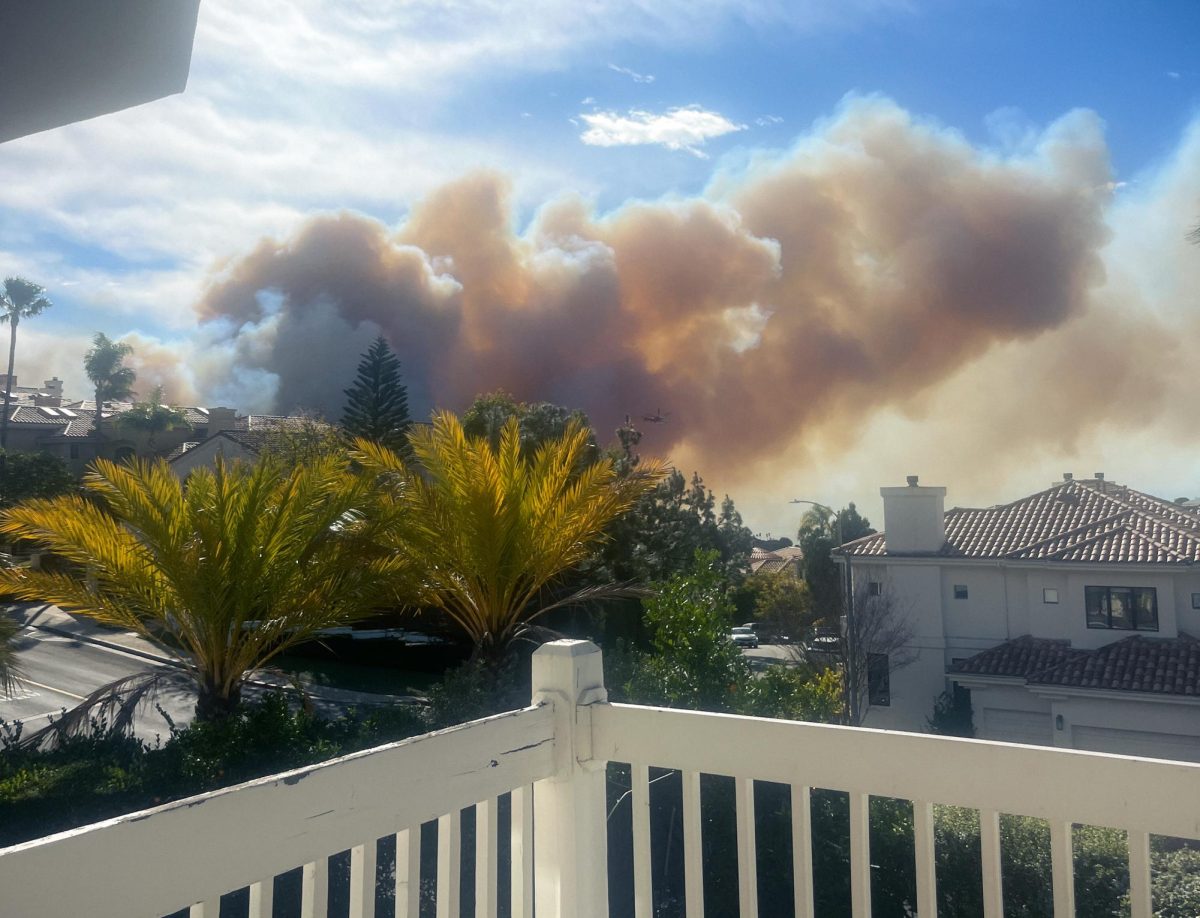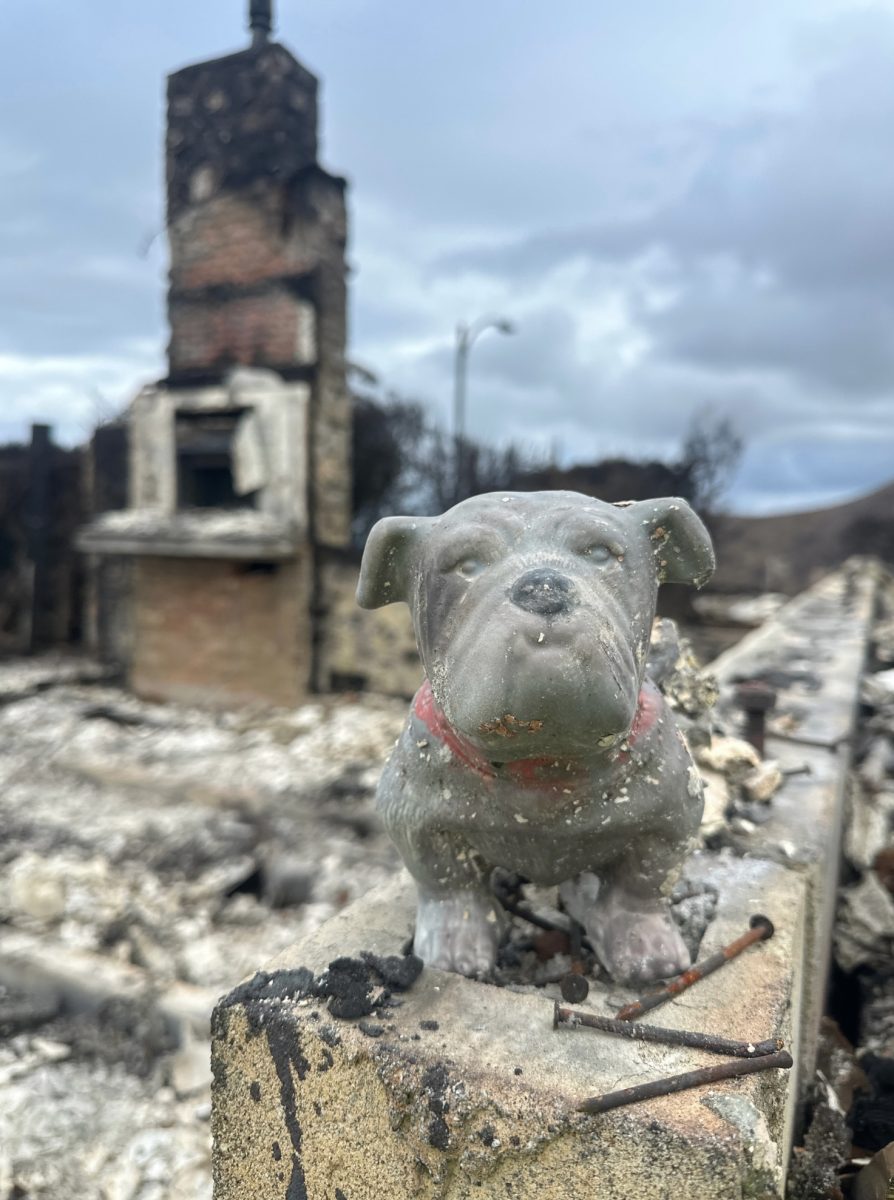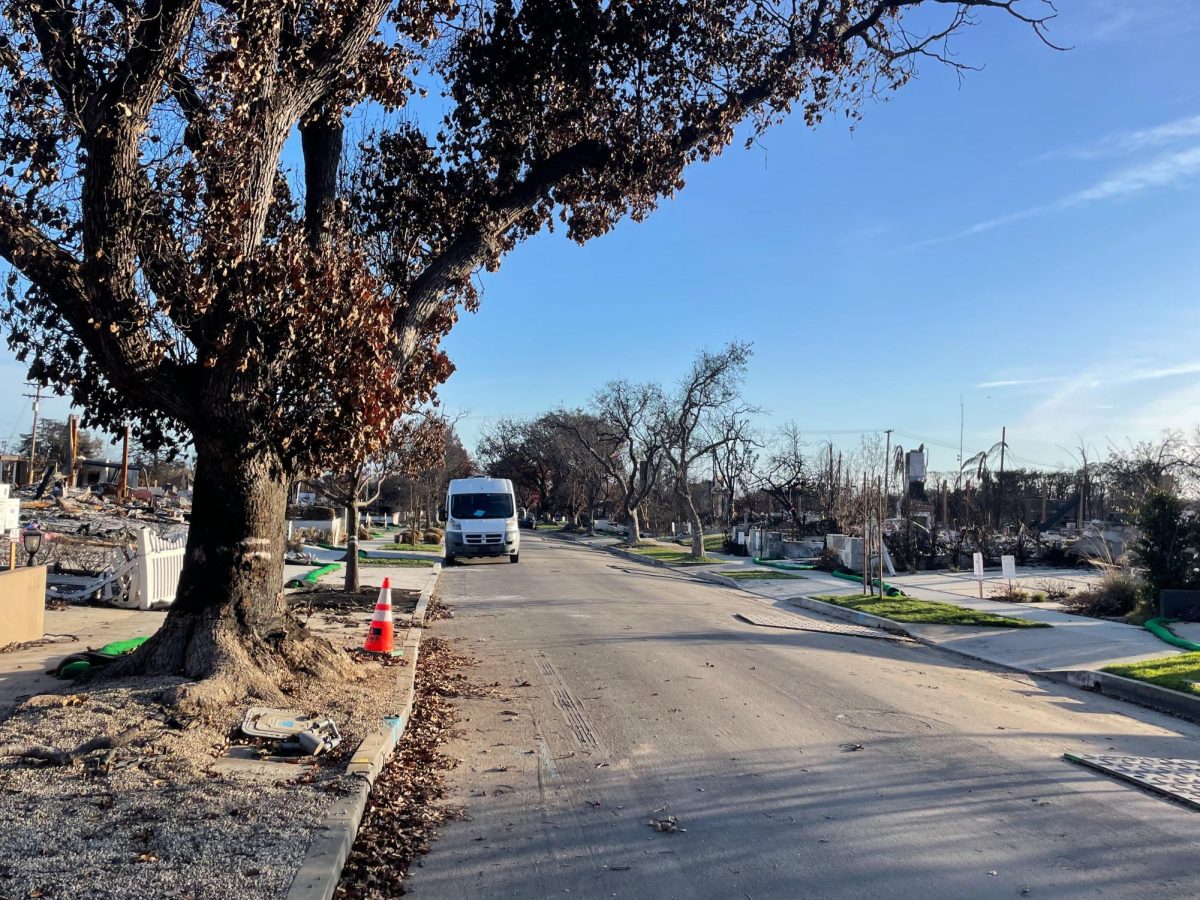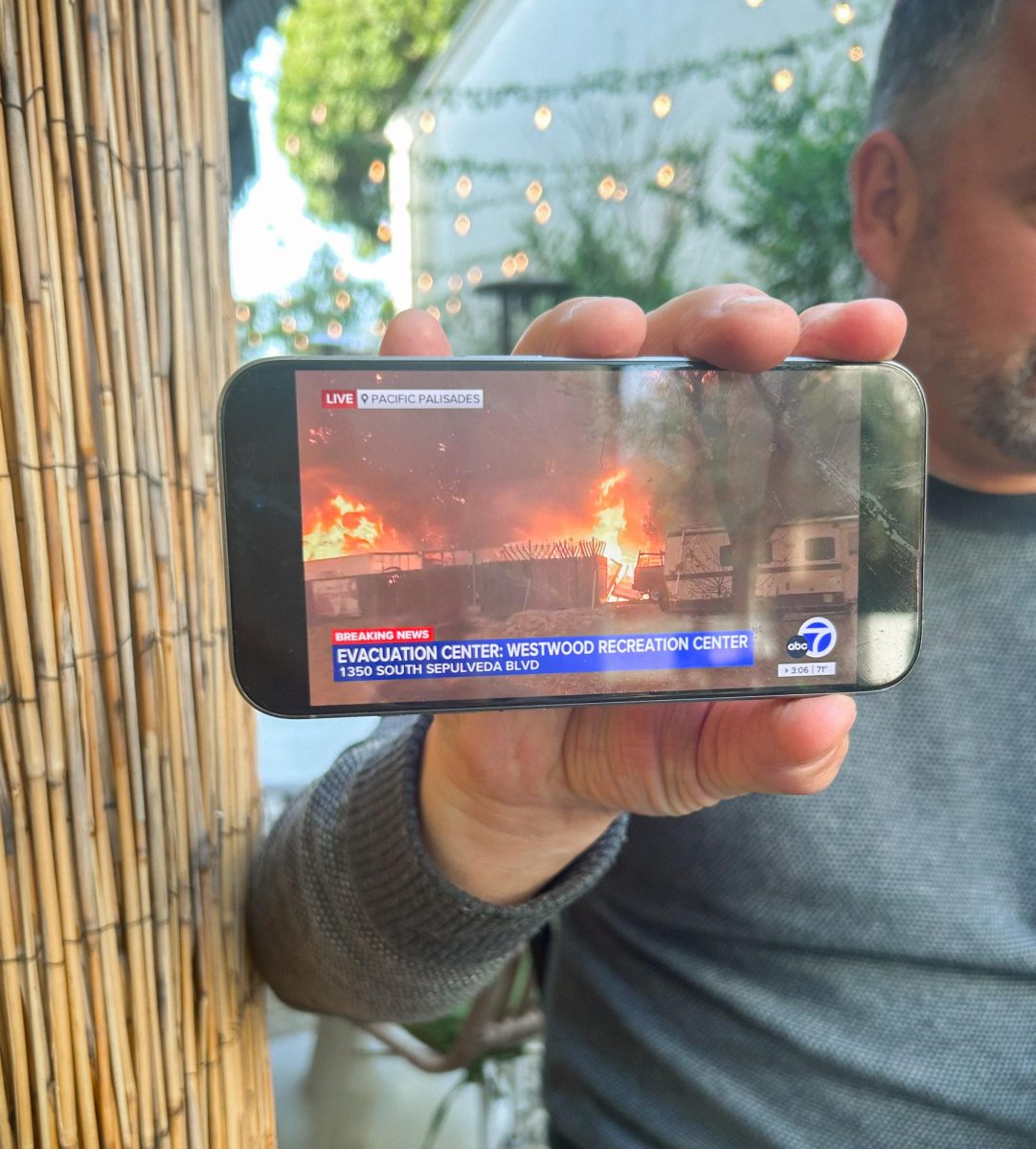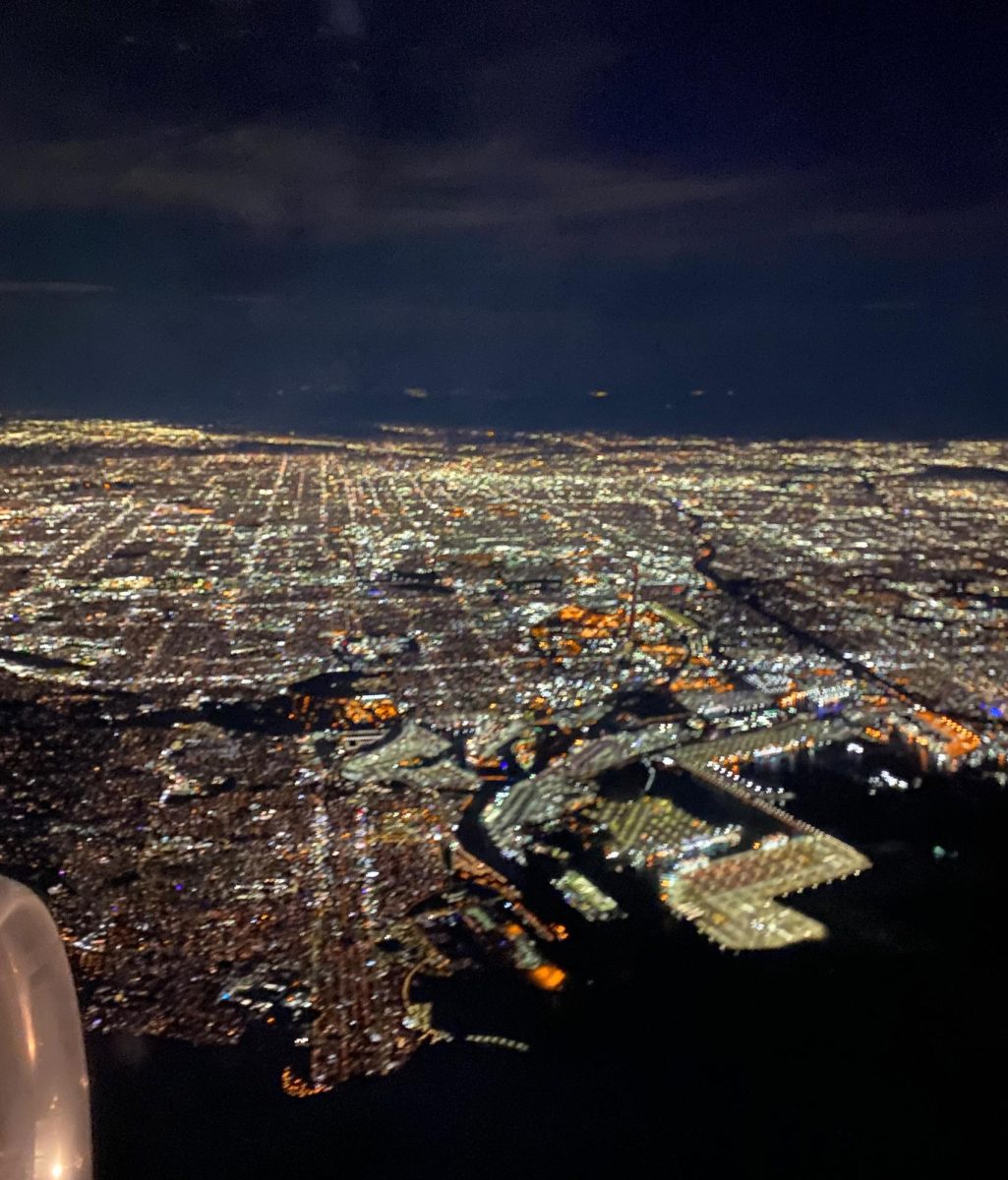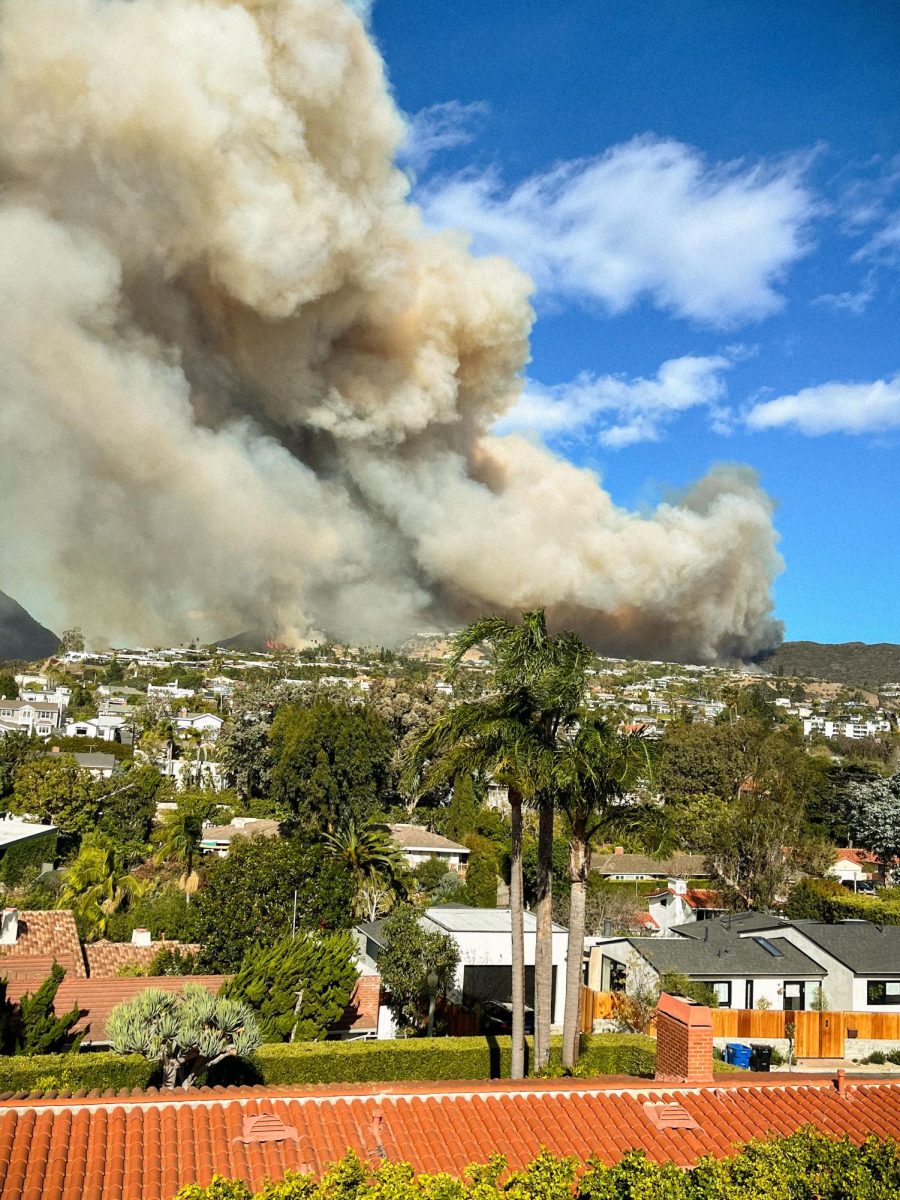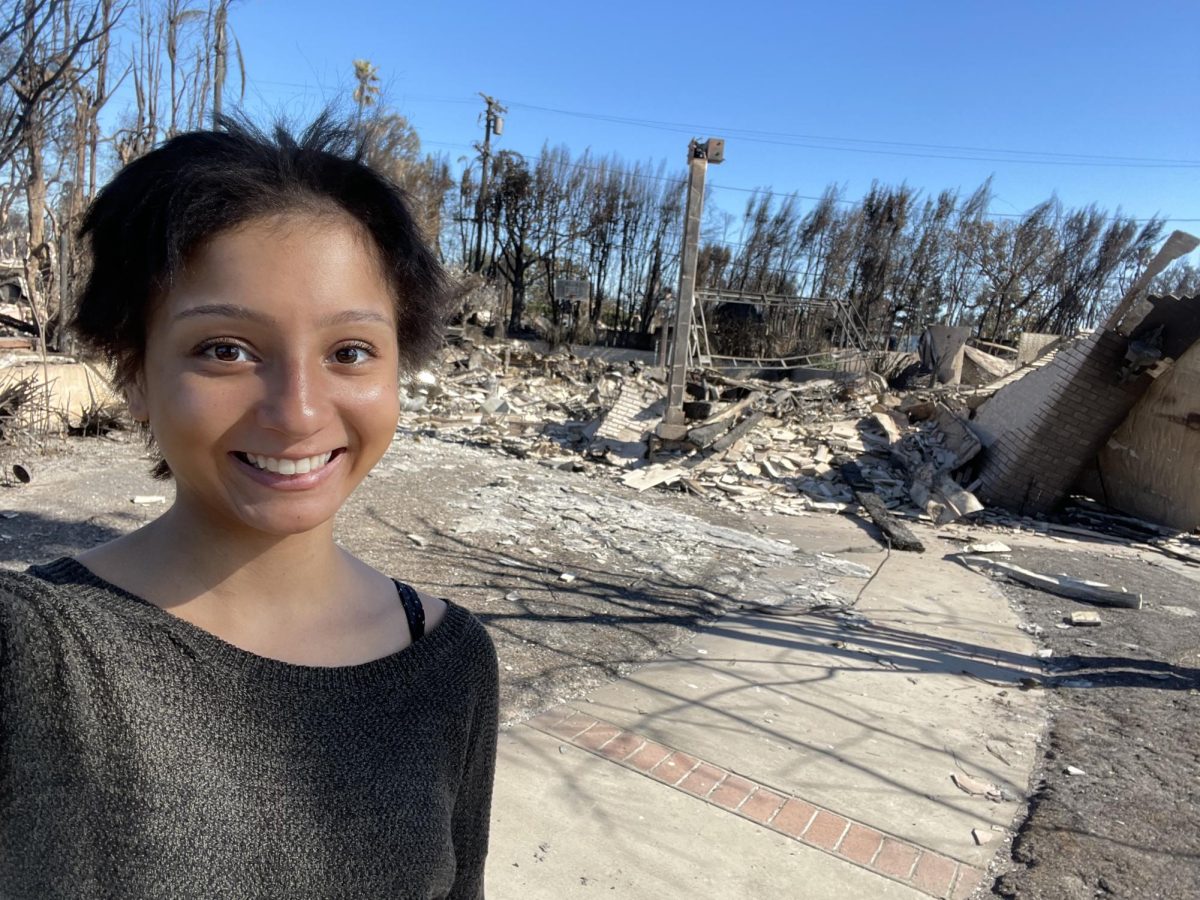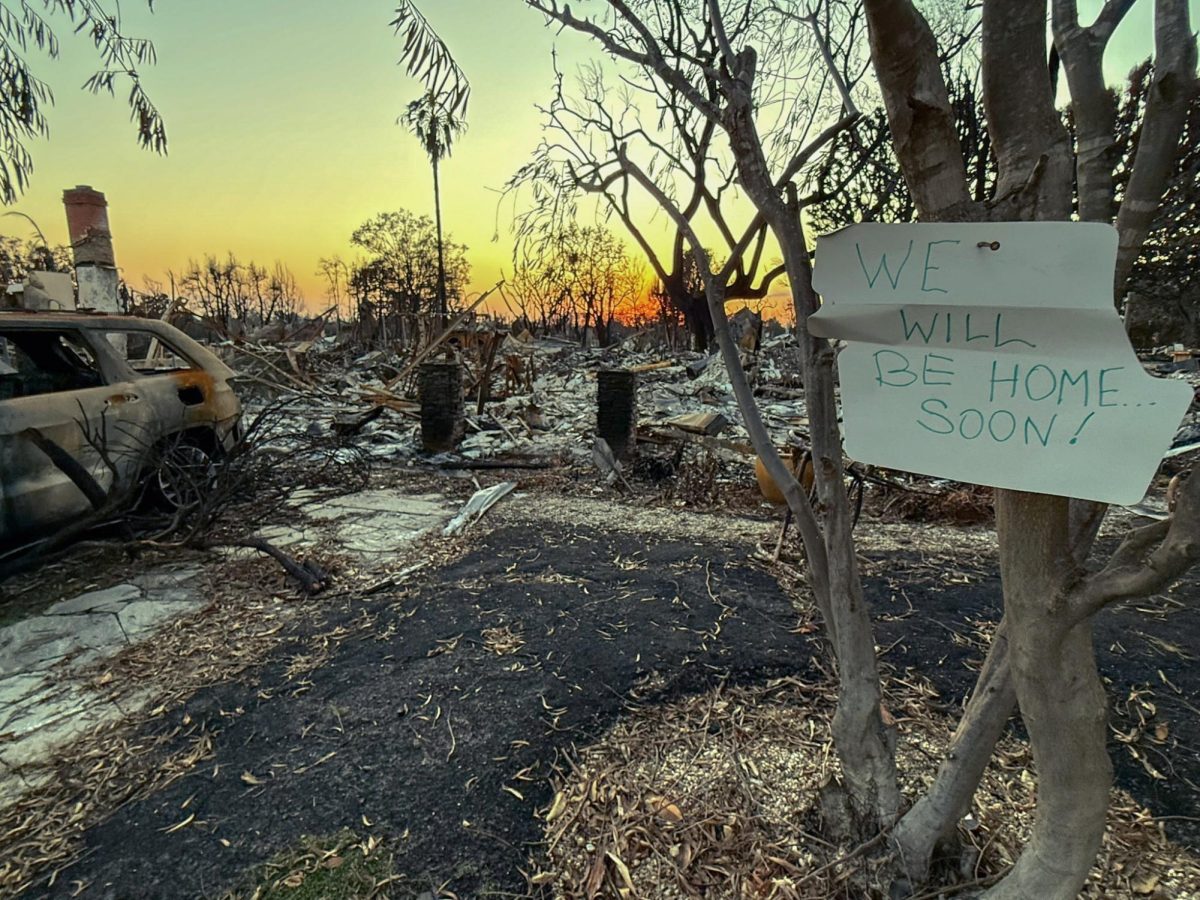All Right Pali, Time to Follow Basic Science
May 24, 2022
Whether it be a new surge of cases or a new mandate, this year has been full of disruptions due to COVID-19. But, after the Omicron surge’s sharp descent, Pali’s indoor mask mandate finally came to an end on March 21.
On Feb. 28, the California Department of Public Health (CDPH) and Los Angeles County Department of Public Health (LACDPH) announced that school masking could end come March 12. They based the decision on a rapid decrease in COVID-19 cases, as well as new Center for Disease Control and Prevention (CDC) guidelines that did not recommend a mask mandate for low- or medium-risk counties like Los Angeles.
But, the Los Angeles Unified School District (LAUSD) had to wait for the influential United Teachers Los Angeles (UTLA) labor union’s go-ahead before lifting the mandate. LAUSD and UTLA eventually reached an agreement, and schools were able to lift their mandates on March 23. Pali had a different agreement with UTLA that allowed the school to remove the mask mandate two days earlier.
What was overlooked by many, though, was Pali’s policies on reinstituting the mask mandate. On March 18, when the school announced the end of the mandate, Pali and UTLA implemented a new rule that students and staff must wear a mask for at least a week if just 0.5% (which equates to about 16 students) of the school is infected.
Due to this policy, students only got a month-long taste of guidelines that were actually based in science; on the evening of April 19, after a meeting with the school’s PCHS-UTLA Representatives, the Pali administration announced that indoor masking would be required again until April 29; and on that day, they announced that indoor masking would be required until May 6. On May 9, indoor masking was made mandatory until May 16. This was because 0.7% of Pali students tested positive for the virus, likely due to the influx of students who contracted it over spring break. According to Pali’s COVID-19 dashboard, there were 22 student and two staff active cases as of May 16, a decrease from 40 overall cases the week prior.
So, the reason that every single one of the 3,240 people at Pali have to wear masks indoors is that 22 people are currently testing positive. In other words, 99.3% of the school needs to wear masks because 0.7% of the school has the virus.
When these new guidelines were implemented, no public health guidance or science of any kind was cited to justify them. And, the new Pali guidance actually contradicts existing health recommendations. In fact, there is no public health guidance that even remotely agrees with Pali’s approach. First of all, CDPH doesn’t call for any mandates, simply saying that it “strongly recommends that all persons (e.g., students and staff) wear masks in K-12 indoor settings.”
The CDC (which Los Angeles County primarily aligns with) states that in low- and medium-risk areas, such as Los Angeles, “people can wear a mask based on personal preference, informed by personal level of risk.” Any mention of mask mandates, or even a recommendation to wear a mask when a county has low or medium COVID-19 risk, is absent from the CDC’s guidance. Moreover, Pali’s current threshold is clearly arbitrary. Under these new rules, it’s seemingly permissible to relax masking guidelines if 0.49999% of the Pali community has COVID-19, but if that number goes up to 0.5%, it’s enough to mandate masks again.
Pali’s rules contradict local guidance, too, not just federal and state parameters. Cases have certainly risen a bit in Los Angeles County since the end of the major Omicron surge, sure, and we’re sitting at an average of 3,296 cases per day, versus 1,676 on March 21, according to the New York Times. That’s because of emerging Omicron subvariants, which are more easily transmitted from person to person. But, what’s notable is that school outbreaks (the metric used by LACDPH to determine masking guidance) still aren’t classified as being at a “high” level by the health department – rather, as of the week of May 20, they’re at a “medium” level of concern, with 11 new outbreaks in the last week. The appropriate response to a moderate level of concern is to “strongly recommend masking indoors for staff and students,” per LACDPH, and to only require masking for students who have been exposed to COVID-19 and for asymptomatic staff.
In fact, even if outbreaks were in LACDPH’s “high concern” category, mask mandates still aren’t unilaterally recommended or required; rather, masks should only be mandatory “as feasible for high-risk indoor activities including indoor medium and high contact sports, large events, singing and band/orchestra in TK-12 schools.” Otherwise, they should remain strongly recommended for all, rather than mandated. And so, Pali remains at odds with the current health guidance.
And, it doesn’t stop there. Pali decided to slip in yet another, even more unscientific threshold of 1.5% positivity; which, if reached, would mean that both indoor and outdoor masking would be mandatory for everyone on campus. This move is considered so irrelevant and absurd by public health bodies that the CDPH and LACDPH don’t even mention outdoor masking in their current school mask guidance articles, and I’d be surprised if Pali could come up with a single piece of reliable data to prove that this step mitigates risk of contracting COVID-19 in schools. The only thing the CDC has to say about outdoor masking in schools specifically is that “in general, people do not need to wear masks when outdoors.”
A BBC piece published about a year ago on April 22, 2021 stated that “fleeting encounters are highly unlikely to be long enough for enough virus to reach you…someone would have to cough right at you, at the moment you’re inhaling, for an infection to happen.” Outdoor masking is, quite simply, nothing more than performative theater.
A common theme throughout these proceedings has been the mention of UTLA, whether it be with LAUSD’s mask mandate having to be negotiated with the influential union, or Pali’s 0.5% threshold that was apparently “worked out months ago” by PCHS-UTLA. This tells us exactly where this rule came from; outdated edicts from a labor union. These agreements seemingly have not been adapted for the constantly-changing state that we are in with this pandemic. But importantly, UTLA is not a medical authority or a public health body. UTLA is not in the position to make decisions on a whim about the extent of COVID-19 mitigation methods, especially when they go against what the CDC, CDPH, LACDPH and even LAUSD suggest doing. UTLA’s authority to negotiate about COVID-19 concerns with school staff should not extend as far as forcing students to wear masks. That isn’t to say that UTLA shouldn’t have any say in certain COVID-19 measures, but they certainly shouldn’t be the sole arbiters of safety precautions; especially when those precautions defy our current reality of the pandemic.
“When PCHS administrators and UTLA-PCHS representatives met in early March to discuss current health conditions and protocols, PCHS and LA County both had a .25% positivity rate,” said Principal Dr. Pamela Magee. “An agreement was reached that .5% was the appropriate threshold for reinstituting indoor masking.”
Again, nothing was actually cited to back this. No public health guidance. No medical advice. Not even a study that shows that there’s substantially more virus spread when 0.5% of those attending a school have COVID-19.
Rather than medical professionals and accepted science, union representatives are the ones at the forefront of these health and safety measures. When asked if labor partners had a stake in this decision making, Magee offered a clear answer: “Yes.” And it’s ironic, because Magee also said that “an agreement was already in place to follow state and county guidelines in consultation with UTLA-PCHS.” But, that isn’t what Pali is doing right now.
There are reasons that masks aren’t being mandated by the state or county anymore, and aren’t being unilaterally recommended by the CDC. One of those reasons is that effective vaccines are widespread. According to LACDPH, nearly 80% of Los Angeles residents have received at least one vaccine dose according to LACDPH, and 37% of those people are boosted with an additional dose or two. Also, an astounding 85% of 12-17 year olds in Los Angeles have received at least one dose, 24% of whom are boosted. Another reason is the obvious change in data when it comes to case counts locally. When asked by the Los Angeles Times, Dr. Mark Ghaly (California’s Health and Human Services Secretary, and the one who announced the mask-optional shift for schools at a press conference on Feb. 28) said that “this feels like the right time. There’s the data that supports it.” This isn’t a debate over whether or not masks are effective at stopping COVID-19 – there’s definitely evidence to suggest that they are reliable. Instead, this is about whether or not a mask mandate is necessary at this point in the pandemic. Right now, it’s not.
And after Omicron ended, many realized that this virus isn’t going away. That was something that was best indicated to Californians when Governor Gavin Newsom unveiled the first “endemic” COVID-19 plan in the country on Feb. 18.
“We are moving past the crisis phase into a phase where we will work to live with this virus,” Newsom said.
Dr. Anthony Fauci echoed Newsom on April 27, saying that the United States has moved “out of the full-blown explosive pandemic phase.”
By no means does that mean giving up, and it doesn’t mean abandoning masks. But, it does mean that the time to think about mandating things again is during an Omicron-like surge, a time where a mandate might have a tangible benefit. Right now, there is no surge. There isn’t an uptick in cases. Los Angeles is barely in CDC’s “medium risk” category, and nearly all of LACDPH’s “early alert signals” are of low or medium warning levels; nothing is slipping into higher alert.
A move to mandate masks at Pali, in as stable of an environment as we’re in right now, is confusing and disingenuous. Pali is not going to be able to keep convincing students and staff that these constant changes are about their health and safety when they don’t have the numbers, data, science, guidance, recommendations or statistics to back a mandate. This mandate is unscientific and fearful, and these thresholds are a bad way to respond to COVID-19.



